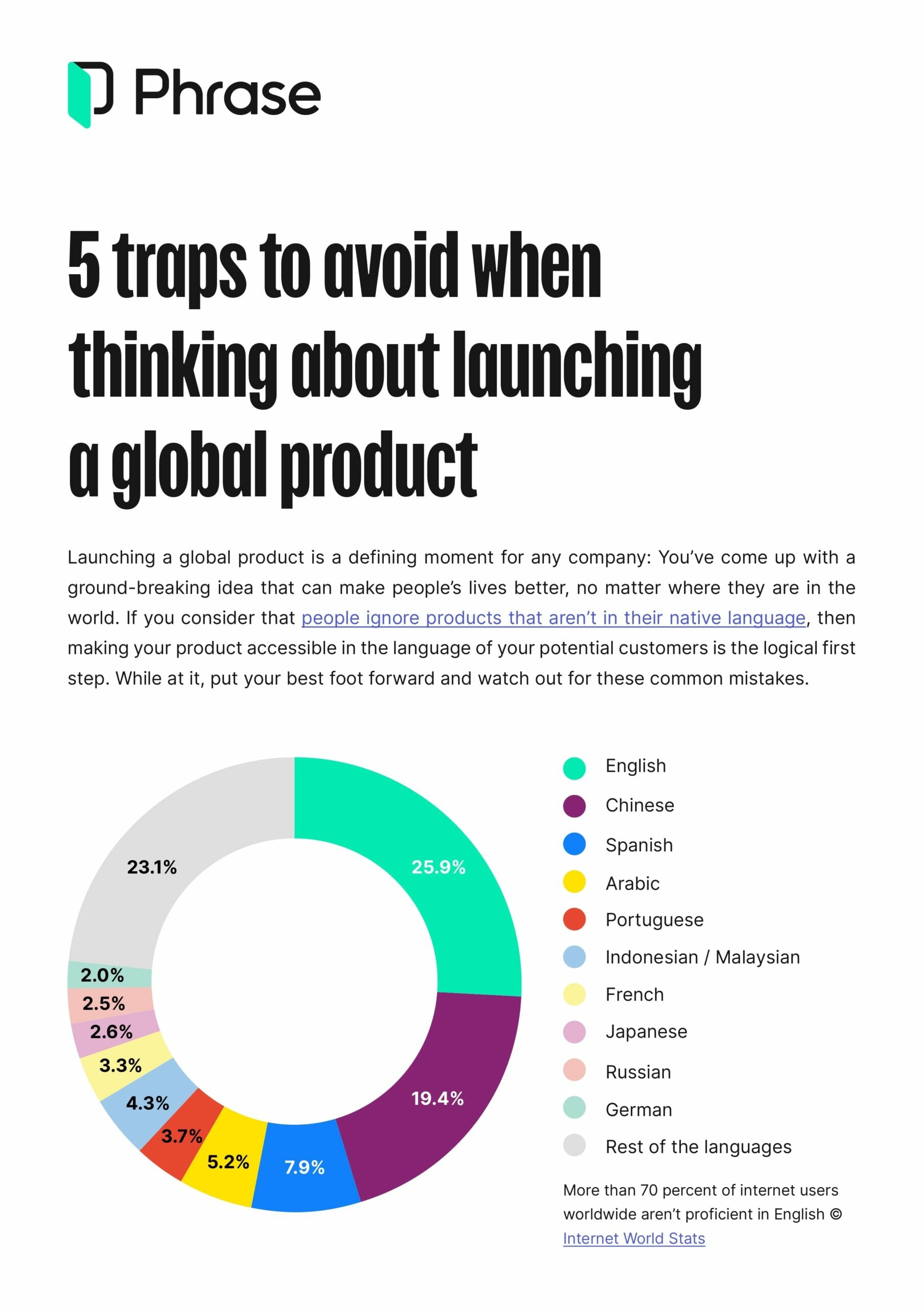Global business
How to Effectively Navigate Stakeholder Management for Global Success

In the ever-changing world of global business, stakeholder management is a key aspect that can often make or break the international success of a product. Successful product managers are able to deliver valuable products in different target markets and drive global business outcomes by implementing effective stakeholder management strategies.
To help you make the most of it, too, this guide explores the importance of stakeholder management in launching products globally, the benefits it brings to product people, and the key steps involved in the process. It also provides tips that product people can use to navigate stakeholder relationships more effectively and achieve their goals.
What is stakeholder management?
Stakeholder management is the process of identifying, prioritizing, and engaging individuals or groups to ensure the successful delivery of a product.
Effective stakeholder management involves understanding the needs, expectations, and motivations of everyone involved—and strategizing ways to effectively engage them throughout the product life cycle.
By actively involving stakeholders, you can ensure that their interests are considered and their expectations are met. This not only leads to better decision-making but also helps in building strong relationships with every stakeholder, ultimately defining the success of a global product.

FREE DOWNLOAD
5 traps to avoid when thinking about launching a global product
Most people ignore products in languages that they don’t speak, so give yourself the best chance of success by avoiding these 5 common mistakes in global expansion.
Benefits of stakeholder management for product people
Playing a key role in shaping the trajectory of a global product, stakeholder management isn’t just a nice-to-have but an essential practice for product people. It helps build strong relationships, align priorities, secure buy-in, tap into expertise, mitigate risks, and ultimately deliver a product that meets the needs and expectations of its stakeholders. Let’s look at its benefits more closely.
Building strong relationships
One of the primary reasons why stakeholder management is important is that it helps product people build strong relationships with key individuals or groups who can influence the success of their product.
By actively managing stakeholders, product people can ensure that their priorities are aligned, reduce conflicts, and gather valuable feedback and insights.
This enables them to make informed decisions and course corrections to increase the chances of delivering a product that meets the needs and expectations of its target audience.
Securing buy-in and support
Stakeholder management also helps secure buy-in and support for important decisions. In a constantly evolving and complex business environment, where multiple stakeholders may have differing opinions and interests, gaining consensus and support is crucial.
By engaging stakeholders early on and involving them in the decision-making process, product people can address concerns, address potential resistance, and build a sense of ownership and commitment among stakeholders.
Leveraging specialist expertise
Furthermore, stakeholder management enables product people to tap into the expertise and resources of their stakeholders as each stakeholder brings a unique perspective and set of skills to the table.
They can provide valuable insights, offer suggestions for improvement, and even contribute to the development and testing of the product—resulting in a more robust and market-ready offering.
Mitigating risks and building trust
Stakeholder management helps mitigate risks and anticipate potential challenges. By actively engaging with stakeholders, product people can identify and address potential issues early on.
Similarly, by keeping stakeholders involved throughout the product development lifecycle, product people can build trust and credibility, which can prove invaluable in times of crisis or when seeking support for future endeavors.
Fostering innovation
Last but not least, stakeholder management has the power to drive innovation. When product people involve various stakeholders in the product development process, they open the door to a diverse range of ideas and perspectives.
Stakeholders can help product teams better understand customer needs or recognize market trends worldwide more quickly. By leveraging these inputs, product people can identify innovative solutions and stay ahead of the competition.
What are the roles of stakeholders in product management?
Stakeholders can play various roles in product management, and product people need to understand and manage these roles effectively. They can act as gatekeepers, decision-makers, sponsors, influencers, or users of the product.
The most common types of stakeholders include:
- Business executives and senior decision-makers
- Board members or investors
- Government representatives
- Trade associations
- Your team members
- Colleagues
- Existing and prospective customers
- Third-party analysts or advisors
- Interest groups
- Media
Each stakeholder has their own goals, interests, and concerns that need to be addressed during the product development process. By identifying and understanding the roles of stakeholders, product people can tailor their engagement strategies to ensure the right level of involvement and decision-making power.
Tip: Stakeholders can either be organizations or individuals, but ultimately, the key lies in effectively communicating with people. That’s why it’s essential to accurately identify the individual stakeholders within the organization for effective engagement.
What stakeholders really want
Almost everyone would like to have a say in how a product should be. However, that doesn’t make everyone who sends you a feature request a stakeholder.
To test if you should count someone as a stakeholder or not, you should always ask yourself how if that person has veto power or can even prevent you from launching.
In that regard, Mendelow suggests assessing stakeholders based on power (their ability to influence the product strategy) and interest (their level of engagement in the success of the product).

Based on the position you assign stakeholders on the grid, the actions required with each of them are as follows:
- High power, highly interested players (manage closely): Aim to actively engage these individuals, dedicating significant efforts to meet their needs and expectations.
- High power, less interested context setters (keep satisfied): Invest enough effort to maintain their satisfaction without overwhelming them with your message.
- Low power, highly interested subjects (keep informed): Provide adequate information and communicate with them regularly to address any potential issues or suggestions for improvement.
- Low power, less interested crowd (monitor with minimal effort): Avoid inundating these stakeholder groups with excessive communication and instead keep a watchful eye on changes in their levels of interest or influence.
Now that we have a better overview of the most common stakeholder groups, let’s take a look at what they typically expect from product people when launching and marketing a product in different target markets.
- Executives are primarily focused on vision and strategy: How would the adaptation of different product versions to different target markets contribute to the company’s global growth?
- Developers seek to understand the global product roadmap and how to efficiently orchestrate all required processes within agile development cycles to ensure continuous delivery and improvement.
- Salespeople mostly care about how the product or a new feature will give them a competitive edge in the market, as it directly impacts their ability to close deals and achieve sales targets.
- Marketers want to be familiar with the product’s key attributes and benefits for customers in various markets so that they can craft a compelling narrative around it.
- Localization managers seek information about your target markets and languages to establish effective localization and translation processes that ensure the product offers the same user experience across cultures.
Dive deeper
Build the right localization strategy for your business
Learn how to devise a localization strategy for your business with the right goals, metrics, and workflows to drive global growth effectively.
Key steps in the stakeholder management process
The stakeholder management process involves several key steps that product people need to follow to effectively manage their stakeholders:
- Identify stakeholders: Begin by identifying all the individuals or groups who have an interest in the product. This includes both internal and external stakeholders, such as customers, executives, team members, investors, and partners.
- Analyze stakeholders: Once identified, analyze each stakeholder’s needs, expectations, and influence. This will help you prioritize your efforts and tailor your engagement strategies accordingly.
- Engage stakeholders: Actively engage and involve stakeholders throughout the product lifecycle. This can be done through regular meetings, workshops, surveys, or user research sessions. Provide opportunities for stakeholders to provide feedback, contribute ideas, and stay informed.
- Communicate effectively: Establish clear and open communication channels with stakeholders. Be transparent about the product’s progress, challenges, and decisions. Use different communication methods and mediums to ensure that the right information reaches the right stakeholders in a timely manner.
- Manage conflicts: Anticipate and address conflicts or disagreements among stakeholders. Facilitate open and respectful discussions to find common ground and reach consensus. Be proactive in managing conflicts to avoid potential delays or disruptions to the project.
- Monitor and evaluate: Continuously monitor and evaluate the effectiveness of your stakeholder management strategies. Solicit feedback from stakeholders to identify areas for improvement and make necessary adjustments to your approach.
Stakeholder management strategies for product people
Managing stakeholders while developing a product for a global user base can be challenging, but with the right strategies, product people can effectively leverage these relationships in the long run.
With proactive engagement, clear communication, tailoring your approaches, and more, product people can navigate stakeholder dynamics and enhance the quality and success of their product in the long run. Let’s discuss some key stakeholder management strategies that you can readily apply.
Be proactive in engaging product stakeholders
Proactive stakeholder engagement is key for success. Product people should always strive to be proactive in their approach by anticipating stakeholder needs and concerns. By identifying potential risks and opportunities, product people can take prompt action to maximize stakeholder satisfaction and minimize potential obstacles.
Establish clear goals, objectives, and expectations for stakeholders
Setting clear expectations and goals is crucial in managing stakeholder relationships effectively. By clearly articulating the desired outcomes and aligning stakeholder expectations with your product vision, you can foster a shared understanding and commitment to the product’s success. This clarity helps build trust and facilitates smoother team collaboration.
Create effective communication channels
Effective communication is at the core of successful stakeholder management, and you can best maintain it by establishing clear communication channels with your stakeholders.
By maintaining open lines of communication, you can ensure that stakeholders are fully engaged and informed, and that their perspectives are duly considered. This includes providing regular updates, seeking feedback, and soliciting their input throughout the product lifecycle.
Address concerns continually
Actively listen to stakeholder concerns and address them promptly. Be transparent about the steps being taken to resolve issues. Timely and proactive action can prevent minor concerns from escalating into major problems.
Celebrate successes
Recognize and celebrate the achievements and contributions of stakeholders. Publicly acknowledge their involvement and show appreciation for their support. This fosters a positive and collaborative environment.
Tailor your strategies for different stakeholders
Different stakeholders have different priorities, communication styles, and preferences. To collaborate effectively, it’s advisable to adjust your approach to match their individual preferences. Recognize that everyone is unique and use specific communication strategies to engage them successfully.
Here’s how you can tailor your approach for the four main stakeholder groups:
Tactics for interacting with business executives
- Keep it high level and try not to go into nitty-gritty details—unless asked.
- Focus on the outcome and results for the company.
- Be enthusiastic and positive.
- Tell a story about your product.
Tips for working with developers
- Tell developers what you expect the product to do—and especially why.
- Help them understand how the features will benefit end users.
- Most importantly, avoid telling them how to do their job—they’re keen to figure things out themselves.
- Be available and approachable—and try not to micromanage.
Methods for collaborating with salespeople
- Always answer the question: How will this help them make more sales?
- Show them how, ideally with evidence, the next initiatives will help the team’s sales numbers.
- Take their suggestions seriously, but make sure to test any assumptions before adding new features to the pipeline.
Techniques for dealing with marketers
- Start collaborating with marketers as early as possible.
- Explain the target user persona and how the product fits into the market.
- Explain your product’s unique selling points and it will improve customers’ lives.
- Motivate them to create a compelling story around the product.
Guidelines for engaging with localization managers
- Discuss in detail the target markets and languages to be supported.
- Clearly communicate the product’s target audience and share any relevant market research insights.
- Collaborate in testing to verify the product’s cultural appropriateness for different markets.
- Acknowledge the time-intensive nature of the localization process and show appreciation for the localization team’s efforts.
Stakeholder management is an act of balance
Effective stakeholder management is critical to the success of global products. By adopting effective stakeholder management strategies, such as proactive engagement, clear communication, and tailored approaches, product managers can navigate stakeholder dynamics successfully and ultimately build strong relationships, secure buy-in, tap into expertise, mitigate risks, and foster innovation. It only takes to recognize that everyone has their own needs and expectations—and strike the right balance for success.





